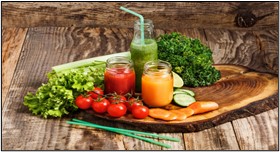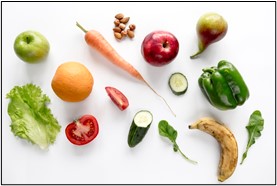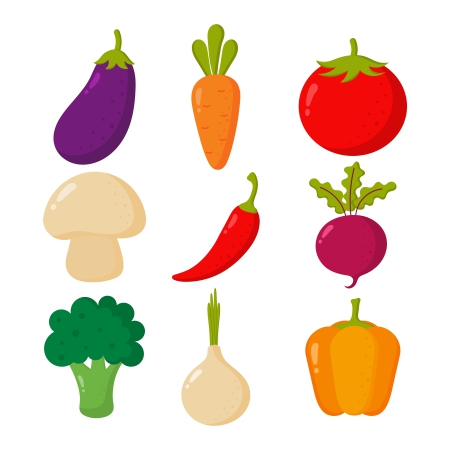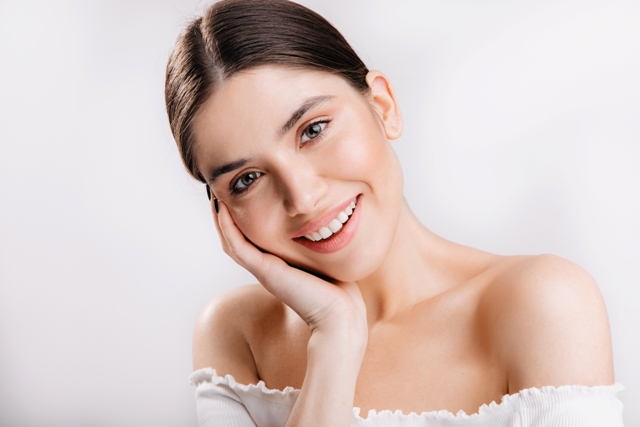Antioxidants are referred to as those compounds present in food stuffs that are associated with inhibiting oxidation and preventing those adverse effects within the body caused by oxidation or oxidative damage. Oxidation is a reaction (chemical), occurred within the body that causes the production of free radicals. Free radicals can cause severe oxidative damage of the organs of body as well as damage the cells adversely leading to increases oxidative stress within body. This oxidative stress can increase the risk of developing cancer, stroke, arthritis, immune deficiencies, and cardiac disease. Antioxidant helps to diminish the risk of oxidative damage within the body and reduces the risk of developing chronic diseases. Antioxidant is popularly known of its unique health benefits and hence, used by a wide range of people for improving the overall health status.
Source of antioxidant
Antioxidants are naturally found in several foods. Quite a lot of studies have revealed that some nutrients also acts as antioxidant as they possess antioxidant property. So, consumption of such foods and nutrients can easily meet the need of antioxidant within the body and protect the body from oxidative damage. Current researches have raveled that some enzymes of human body act as antioxidant that help to guard every cells of the body from reactive oxygen species (ROS).
The following table shows the natural source of antioxidant –
| Foods that contain antioxidant | Nutrients that contain antioxidants | Antioxidant enzymes |
| Carrot Spinach Apple Guava Grapes Berries Leek Onion Garlic Pumpkins Mangoes Apricot Sea foods Milk and dairy products Lean meat Nuts Beans Beet root | Vitamin A (Carotene) Vitamin C (Ascorbic acid) Vitamin E (Tocopherol) | Glutathione peroxidase Catalase Superoxide dismutase
|
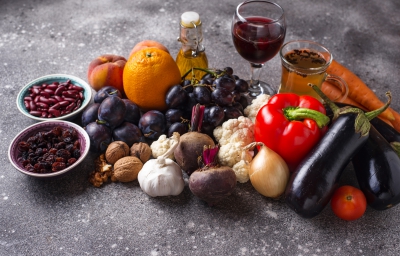
All of these above mentioned foods are good source of antioxidant. Basically, green leafy vegetables and fruits with the color of red, orange, purple, blue and yellow are considered as the richest source of antioxidant. Apart from that, antioxidants are now supplemented commercially, there are various antioxidant supplements are available in markets that supply recommended dose of antioxidant.

Why it is needed?
There are various reasons for consuming antioxidants, which are listed below –
- To protect the body from the harmful effects of free radicals
- To reduce oxidative stress of body
- To reduce the risk of developing degenerative heart diseases and strokes
- To reduce the susceptibility of cancer
- To prevent the cellular damage caused by reactive oxygen species (ROS)
- To prevent lipoprotein autooxidation
- To enhance the growth of cells and tissues
- To prevent the toxic effect of heavy metal, especially lead induced oxidative stress
- To inhibit lipid peroxidation
- To prevent cellular membrane damage
The defensive strategy of antioxidant
Aerobic metabolism and oxidation are such biochemical processes occurred within the body, that causes the synthesis of free radicals and reactive oxygen species (ROS), leads to causes various damage of body, which is called oxidative stress. Such damages can affect several biological molecules such as lipid, proteins, DNA, carbohydrates adversely. Oxidative stress also causes damages of cell membrane, mutagenesis, carcinogenesis, oxidation of protein and lipid peroxidation. So, a process should be required for inactivating those free radicals and reactive oxygen species to prevent oxidative stress and it has been carried out by antioxidant through the process of prevention, interception and repair antioxidant inactivates those free radicals and ROS

These processes are briefly discussed briefly in below -
Prevention:
- It is an important step of their inactivation.
- Here, the antioxidants prevent the formation of free radicals and reactive oxygen species
Interception:
- Antioxidants have carried out this process by non-enzymatic and enzymatic process
- Free radicals have a tendency of chain reaction that is a free radical (a compound having an unpaired electron) reacts with another compound and again release unpaired electron within that compound and makes it free radical. In non-enzymatic way the antioxidant deactivating free radicals by liberating non radical end product
- In enzymatic process, the antioxidant enzymes present in body such as glutathione peroxidase, catalase, react with oxidant compound and causes its detoxification
Repair:
In this process antioxidants are involved in repairing the damages caused by free radicals and ROS within the body
Health benefits of antioxidant
Antioxidants have profound health benefits and have significant role on protecting the body, which are briefly discussed in below –
Role on preventing lipid peroxidation
- Basically, lipid peroxidation is a process that causes degradation of lipids and produce free lipid radical
- This free lipid radical reacts with molecular oxygen and produce an unstable product named hydroperoxides, which leads to free radical chain reactions and increases the synthesis of free radicals many folds, that causes the oxidative damage of the body, especially damage the cell membrane
- Injury of cell membrane affect the permeability of membrane and interfere with cellular transport that hamper the transport of oxygen, nutrients, enzymes, hormones, within the cell resulting in cell death
- Antioxidant protects the body from this damage by inhibiting lipid peroxidation and prevent cellular death

Role on preventing autooxidation
- Autooxidation is a chemical process that occurred within the body by auto degradation of organic compound in the presence of oxygen
- Autooxidation produces cyclic peroxides and hydroperoxide, which causes oxidative damage of the body
- Antioxidant helps to reduce the rate of autooxidation and helps to protect the body from oxidative damage
Role on preventing free radicals
- Free radicals are molecules that contain unpaired electrons. These are produced by oxidation reaction. The unpaired electron makes the radical chemically more reactive and causes free radicals chain reactions
- Free radicals cause oxidative damages of body that include damages of DNA, proteins, cell membrane, that increases the risk of developing cancers, heart diseases, cellular death and several health hazards
- Antioxidant helps to scavenge the free radicals and make them unavailable for body. Hence, it protects the body by inhibiting the harmful effect of free radicals
Role on reducing reactive oxygen species (ROS)
- Three enzymes are present in human body are known as antioxidant enzymes, which are- glutathione peroxidase, catalase and superoxide dismutase. These enzymes work together for regulating the concentration of reactive oxygen species (ROS)
- ROS in low concentration plays important role in defense mechanism and intracellular signaling. On a contrary ROS in high concentration causes several diseases, that include cancers, abnormal endocrine function, unusual immunological functions and ischemia
- During oxidative stress, antioxidants are found to regulating the ROS balance within the body and help to prevent ROS accumulation. This is how it helps to prevent the oxidative damage of the cells

General consideration of using antioxidant
- The challenging health benefits of antioxidants are the foremost reasons of their usage. It is beneficial to consume antioxidant daily. It should be an important portion of regular healthy diet
- Specially, consumption of green leafy vegetables and fruits are of great health worthy and they can easily meet the requirement of antioxidant
- It is beneficial to consume antioxidant rich food in every meal, especially in breakfast and lunch
- Consumption of antioxidant will reduce the susceptibility of cardiac diseases, cancers and the morbidity rate of other diseases
- Though too much consumption of antioxidant is harmful for health as in high concentration it acts as pro-oxidants and increases the rate of oxidation reaction within the body that will cause oxidative damage
Source:
Birben, E., Sahiner, U.M., Sackesen, C., Erzurum, S. and Kalayci, O., 2012. Oxidative stress and antioxidant defense. World Allergy Organization Journal, 5(1), pp.9-19.
Eberhardt, M.V., Lee, C.Y. and Liu, R.H., 2000. Antioxidant activity of fresh apples. Nature, 405(6789), pp.903-904.
Evans, P. and Halliwell, B., 2001. Micronutrients: oxidant/antioxidant status. British journal of nutrition, 85(S2), pp.S67-S74.
Halliwell, B., 1990. How to characterize a biological antioxidant. Free radical research communications, 9(1), pp.1-32.
Harris, E.D., 1992. Regulation of antioxidant enzymes. The FASEB Journal, 6(9), pp.2675-2683.
Hsu, P.C. and Guo, Y.L., 2002. Antioxidant nutrients and lead toxicity. Toxicology, 180(1), pp.33-44.
Matés, J.M., Pérez-Gómez, C. and De Castro, I.N., 1999. Antioxidant enzymes and human diseases. Clinical biochemistry, 32(8), pp.595-603.
Papas, A.M. ed., 2019. Antioxidant status, diet, nutrition, and health. CRC press.
Sies, H., 1993. Strategies of antioxidant defense. European journal of biochemistry, 215(2), pp.213-219.
